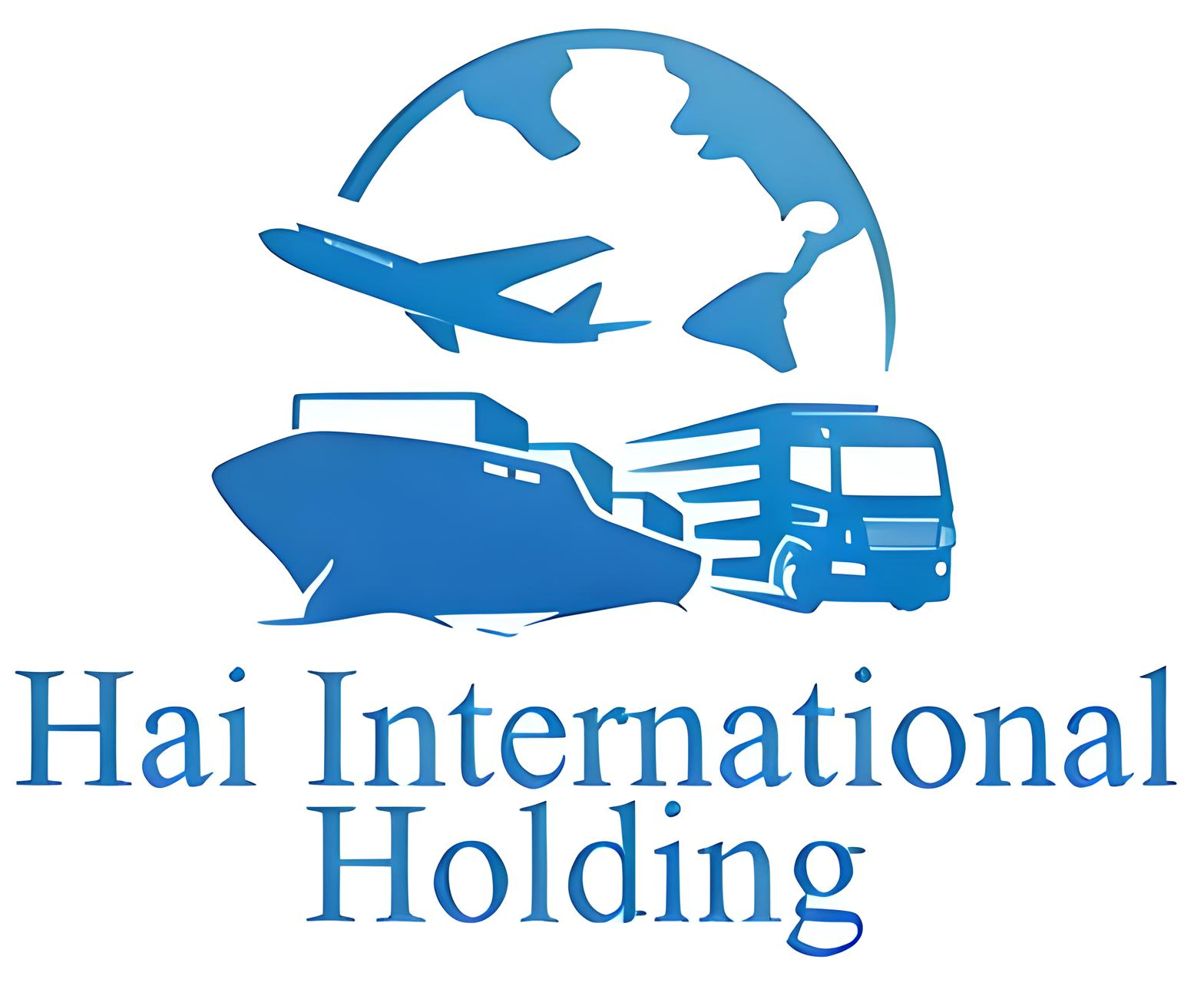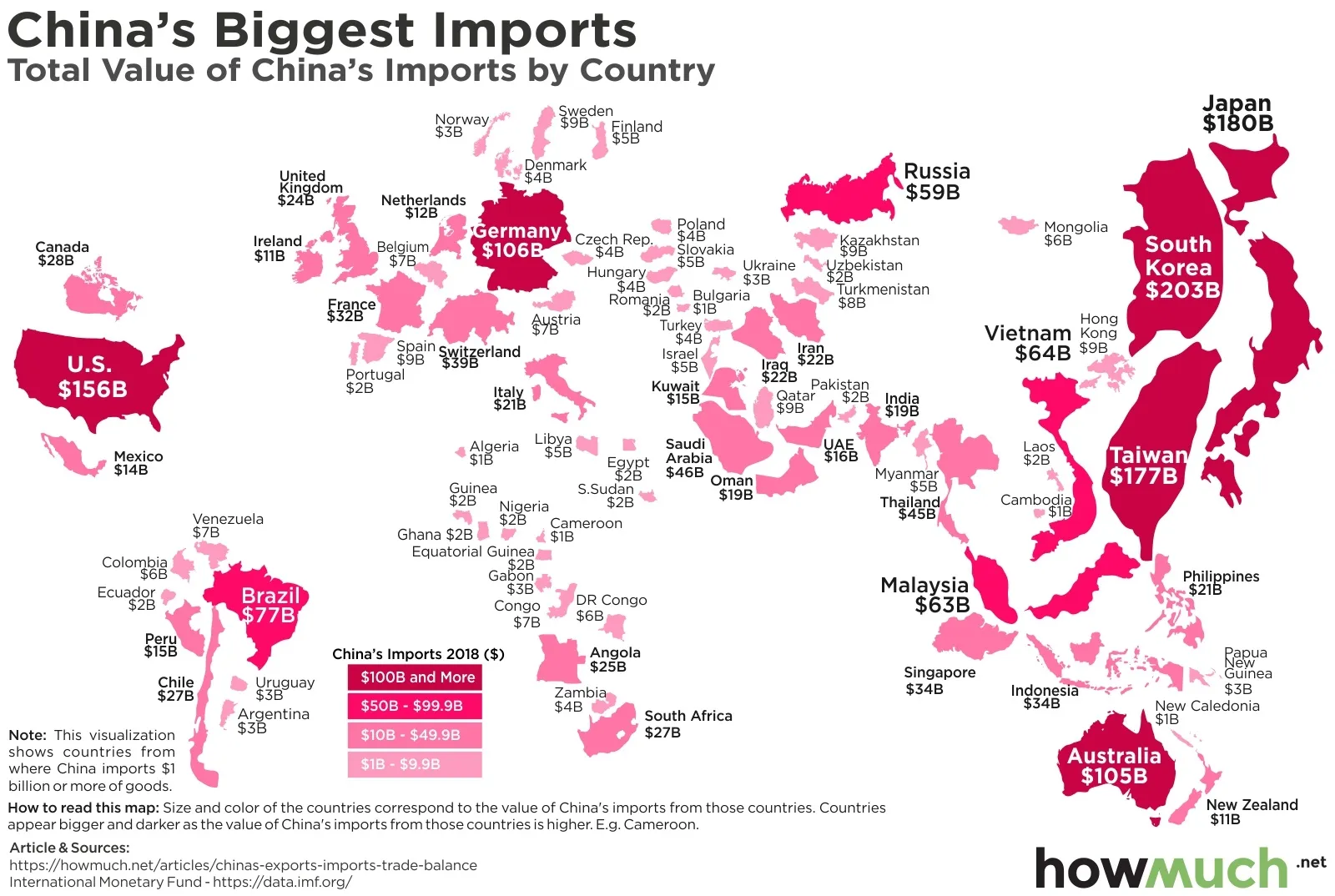 Have you ever wondered how to export goods to China and navigate the complex shipping processes? China is a major import destination, with total imports exceeding $2.4 trillion in 2022.
Have you ever wondered how to export goods to China and navigate the complex shipping processes? China is a major import destination, with total imports exceeding $2.4 trillion in 2022.
Understanding the export and shipping processes is essential for tapping into this lucrative market. It’s not just about sending products overseas; it involves complying with regulations, navigating customs procedures, and selecting the right shipping methods.
This guide will provide you with the knowledge needed to export and ship goods to China efficiently and effectively. Let’s get started!
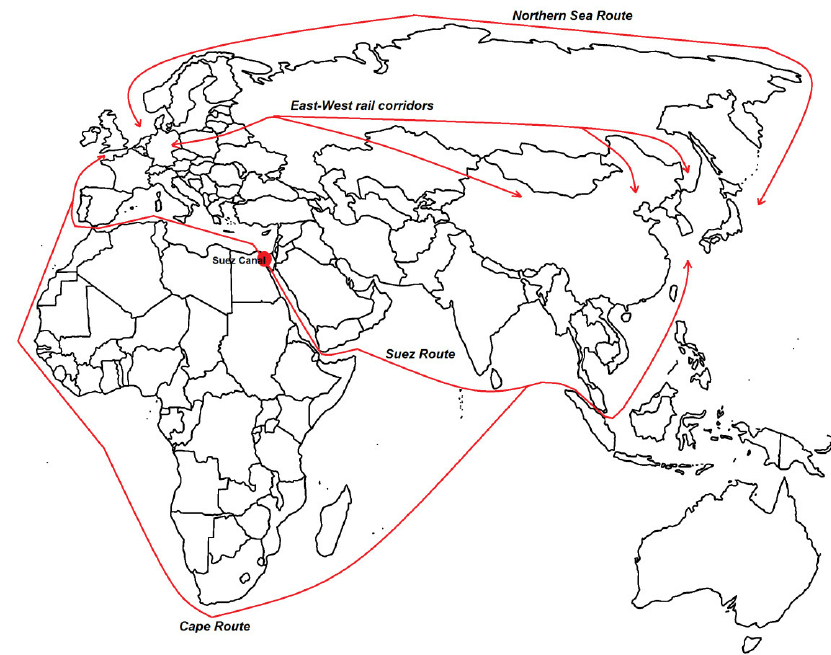
Understanding China Export Regulations
Overview of China’s Export Regulations
Are you familiar with the essential regulations for exporting to China? Navigating China’s export regulations is critical for any business aiming to enter this vast market. Here are some key points to keep in mind:
- Product Compliance: All products must meet the standards set by the General Administration of Customs of China (GACC). For example, electronics must comply with the China Compulsory Certificate (CCC) mark.
- Quality Standards: Goods, especially food and pharmaceuticals, need to pass stringent quality checks.
- Restricted and Prohibited Items: Certain items, such as hazardous materials and restricted technologies, require special permits or are entirely prohibited.
Key Documentation Needed for Exporting to China
Do you know which documents are crucial for smooth customs clearance in China? Proper documentation is essential to avoid delays and ensure compliance.
Essential Documents:
 Bill of Lading: Acts as a receipt for cargo and a contract between the shipper and carrier.
Bill of Lading: Acts as a receipt for cargo and a contract between the shipper and carrier.- Commercial Invoice: Provides details about the transaction and is used for customs valuation.
- Packing List: Lists the contents of the shipment, including weights and dimensions.
- Certificate of Origin: Verifies the country where the goods were manufactured.
- Import License: Required for specific categories of goods, such as medical devices.
Additional Certificates (as needed):
- Health Certificate: Necessary for food and agricultural products.
- Inspection Certificate: Required for certain machinery and equipment.
Common Compliance Issues and How to Avoid Them
Are you aware of the most frequent compliance issues that can hinder your export process to China? Identifying and addressing these issues can save time and money.
Common Issues:
- Misclassification of Goods: Incorrect HS codes can lead to fines and shipment delays.
- Inaccurate Value Declaration: Understating or overstating the value of goods can cause disputes and additional inspections.
- Incomplete Documentation: Missing or incorrect documents can result in shipment holds.
How to Avoid Them:
- Accurate Classification: Ensure HS codes are correct. Consult a customs broker if unsure.
- Proper Valuation: Declare the accurate value of goods, including costs like insurance and freight.
- Double-Check Documentation: Verify all documents before submission. Work with experienced freight forwarders and customs brokers to ensure compliance.
By understanding and adhering to these regulations and documentation requirements, you can streamline your export process to China and avoid common pitfalls.
Exporting to China: Step-by-Step Guide
Preparation Phase
Are you ready to enter the Chinese market but unsure where to start? Proper preparation is key to a successful export strategy.
Research and Understand the Market
- Market Research: Use tools like Alibaba’s market insights or China’s National Bureau of Statistics to gather data on market demand, target audience, and competitors.
- Local Preferences: Tailor your products to meet local preferences and cultural differences.
- Competitor Analysis: Identify and analyze your competitors to understand their strengths and weaknesses.
Ensure Product Compliance with Chinese Regulations
- Certification: Obtain necessary certifications such as the China Compulsory Certificate (CCC) for electronics.
- Quality Standards: Ensure products meet Chinese safety and quality standards.
- Regulatory Bodies: Familiarize yourself with regulatory bodies like the General Administration of Customs of China (GACC).
Documentation and Compliance
Do you know which documents are essential for exporting to China? Proper documentation ensures a smooth export process.
Detailed List of Required Documents
- Bill of Lading: Contract between shipper and carrier.
- Commercial Invoice: Provides details about the transaction and the value of goods.
- Packing List: Describes the contents of the shipment.
- Certificate of Origin: Verifies the country of manufacture.
- Import License: Required for specific products such as medical devices.
Procedures for Obtaining Necessary Certifications
- Application Submission: Provide detailed product information to Chinese authorities.
- Product Testing: Conduct tests in certified Chinese laboratories.
- Factory Inspection: Chinese authorities may inspect your manufacturing process.
- Issuance of Certificate: Once approved, the certificate is issued, allowing you to export.
Choosing the Right Shipping Method
Wondering how to choose the best shipping method for your goods? Different methods suit different needs.
Comparison of Different Shipping Methods
| Shipping Method | Pros | Cons |
|---|---|---|
| Air Freight | Fast, reliable | Expensive, limited cargo size |
| Sea Freight | Economical for large volumes | Slow, subject to port delays |
| Land Freight | Flexible routes, moderate cost | Border checks, variable transit times |
Pros and Cons of Each Method Based on Product Type and Urgency
- Air Freight: Ideal for high-value or urgent goods. While it’s fast and reliable, it is also expensive and has limited cargo size.
- Sea Freight: Cost-effective for bulk goods but slower, making it suitable for non-urgent shipments.
- Land Freight: Useful for neighboring countries, offering flexible routes but involving complex logistics and variable transit times.
Customs Clearance
Are you prepared for the customs clearance process in China? Knowing the steps can help avoid delays.
Detailed Customs Process in China
- Document Submission: Submit all required documents to Chinese customs.
- Inspection: Customs officials inspect the goods to ensure compliance.
- Duty Payment: Pay any applicable import duties and taxes.
- Release of Goods: Once cleared, goods are released for delivery.
How to Navigate Through Chinese Customs Efficiently
- Pre-clearance Preparation: Ensure all documentation is accurate and complete.
- Use a Customs Broker: Experienced brokers can streamline the process and handle complex regulations.
- Stay Informed: Keep up-to-date with any changes in customs regulations to avoid surprises.
Delivery and Distribution
How do you ensure your goods reach the final destination in China efficiently? Choosing the right delivery method is crucial.
Options for Final Delivery Within China
- Direct Delivery: Ship directly to the buyer’s location.
- Distribution Centers: Use local warehouses to store and distribute goods.
- Local Couriers: Partner with reliable local courier services for last-mile delivery.
Role of Local Distributors and Partners
- Market Knowledge: They understand local preferences and regulations.
- Established Networks: They have existing relationships with retailers and buyers.
- Logistics Support: They can manage warehousing and distribution, reducing your overhead.
By following these steps, you can ensure a successful export and shipping process to China, maximizing your market potential and minimizing risks.
Key Considerations for Shipping Goods to China
Understanding China Import Duties and Taxes
Are you aware of the import duties and taxes that apply when shipping goods to China? Understanding these costs is essential for accurate pricing and budgeting.
China Import Duties and Taxes:
- Tariff Rates: Import duties in China vary based on the product’s Harmonized System (HS) code. For example, consumer electronics might have a different tariff rate compared to textiles.
- Value-Added Tax (VAT): The standard VAT rate in China is 13% for most goods, but certain items may have different rates.
- Consumption Tax: This applies to specific goods like tobacco, alcohol, and luxury items. Rates can be significantly higher, sometimes exceeding 20%.
To accurately calculate these costs, use tools like China’s Customs Tariff and Import Tax Calculator. Knowing these fees helps in setting the right pricing strategy and avoiding unexpected expenses.
Strategies for Reducing Shipping Costs
How can you reduce shipping costs to enhance your profit margins? Here are some effective strategies to consider.
Consolidate Shipments:
- Combine Smaller Shipments: Group smaller shipments into a single larger one to benefit from economies of scale. This reduces the per-unit shipping cost.
- Use Consolidation Services: Partner with logistics providers like MCC Qianhai, which offer consolidation services to merge shipments from multiple clients.
Optimize Packaging:
- Efficient Packaging: Use lightweight, durable packaging to minimize weight and volume without compromising product safety.
- Standardize Sizes: Use standardized packaging sizes to maximize space utilization in shipping containers.
Negotiate with Carriers:
- Volume Discounts: Negotiate discounts with carriers based on the volume of goods shipped. Larger volumes can often secure better rates.
- Long-Term Contracts: Enter into long-term contracts with shipping companies to lock in lower rates and ensure reliable service.
Importance of Selecting a Reliable Shipping Company
Why is it crucial to choose a reliable shipping company for exporting to China? The right partner can make a significant difference in the efficiency and success of your shipments.
Factors to Consider:
- Experience and Expertise: Select a company with extensive experience in shipping to China. They should understand the regulatory environment and have a proven track record.
- Network and Coverage: A reliable shipping company should have a strong network and good coverage within China. This ensures timely delivery and better handling of goods.
- Customer Service: Good customer service is essential. Choose a company that offers 24/7 support and can handle issues promptly and efficiently.
Examples of Reliable Companies:
- DHL: Known for its global reach and reliable service, DHL offers specialized solutions for China.
- FedEx: Offers extensive logistics services with robust customer support.
- MCC Qianhai: Provides tailored services for consolidating and shipping goods, leveraging its strategic location in the Greater Bay Area.
By understanding import duties, employing cost-reduction strategies, and selecting a reliable shipping company, you can optimize your shipping process and ensure successful entry into the Chinese market.
Best Practices for Export Logistics to China
Tips for Effective Freight Forwarding
Are you leveraging freight forwarding to streamline your export logistics to China? Here are some best practices to ensure effectiveness.
Choose the Right Freight Forwarder:
 Experience Matters: Select a freight forwarder with extensive experience in the Chinese market. They should be well-versed in local customs regulations and logistics.
Experience Matters: Select a freight forwarder with extensive experience in the Chinese market. They should be well-versed in local customs regulations and logistics.- Strong Network: Ensure they have a strong network of partners and agents in China to facilitate smooth operations.
Plan Ahead:
- Advanced Booking: Book shipments well in advance to avoid peak season surcharges and ensure availability.
- Documentation: Keep all shipping documents ready and double-checked for accuracy to prevent delays.
Use Technology:
- Tracking Systems: Utilize advanced tracking systems provided by your freight forwarder to monitor the movement of goods in real-time.
- Automated Alerts: Set up automated alerts for critical milestones, such as customs clearance and delivery.
How to Handle Logistics for Less-Than-Container Loads (LCL) and Full-Container Loads (FCL)
Do you know the best strategies for handling LCL and FCL shipments to China? Understanding the differences can optimize your logistics.
Less-Than-Container Load (LCL):
- Cost-Effective for Smaller Shipments: LCL is ideal for shipping smaller quantities. You share container space with other shippers, reducing costs.
- Frequent Departures: LCL shipments usually have more frequent sailing schedules, offering greater flexibility.
Full-Container Load (FCL):
- Best for Large Shipments: FCL is more economical for larger shipments as you pay for the entire container, regardless of whether it’s fully loaded.
- Reduced Handling: FCL shipments are loaded and sealed at the origin and opened at the destination, minimizing the risk of damage or loss.
| Aspect | Less-Than-Container Load (LCL) | Full-Container Load (FCL) |
|---|---|---|
| Cost | Share container space, reducing costs. | Pay for the entire container, more cost-effective for large shipments. |
| Departure Frequency | More frequent sailing schedules. | Less frequent, planned for full containers. |
| Handling | Multiple handling points, higher risk of damage. | Loaded and sealed at origin, reduced handling. |
| Suitability | Ideal for small shipments. | Best for large shipments. |
| Transit Time | Potentially longer due to consolidation. | Generally shorter, direct shipping. |
Tips for Both LCL and FCL:
- Proper Packaging: Ensure goods are well-packaged to withstand handling and transportation. Use pallets and cushioning materials as needed.
- Accurate Labelling: Clearly label all packages with the destination address and handling instructions to avoid misrouting.
Utilizing Consolidation Services for Cost Efficiency
Are you taking advantage of consolidation services to reduce shipping costs? Here’s how consolidation can boost your efficiency.
What is Consolidation?:
- Combining Shipments: Consolidation involves combining multiple small shipments from different shippers into one larger shipment. This optimizes space and reduces costs.
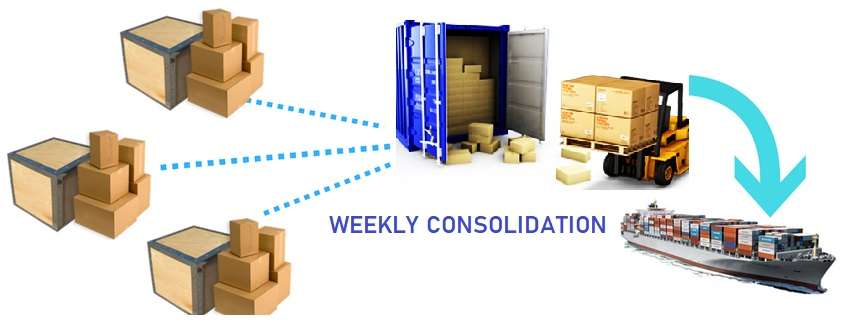
Benefits of Consolidation:
- Lower Shipping Costs: By sharing container space, you pay only for the portion you use, making it more cost-effective than shipping individually.
- Improved Efficiency: Consolidated shipments can streamline the customs process and reduce transit times.
How to Utilize Consolidation Services:
- Partner with MCC Qianhai: MCC Qianhai offers specialized consolidation services, leveraging their strategic location in the Greater Bay Area.
- Regular Schedules: Take advantage of regular consolidation schedules to plan your shipments better.
By following these best practices for freight forwarding, effectively handling LCL and FCL shipments, and utilizing consolidation services, you can optimize your export logistics to China, ensuring cost efficiency and timely delivery.
Navigating China Trade Policies
Overview of China’s Trade Policies and Agreements
Have you ever wondered how China’s trade policies can affect your business? Understanding these policies is crucial for successful exporting.
China’s Trade Policies:
- Tariff Regulations: China imposes tariffs on imports, with rates varying based on product categories. For example, agricultural products typically have higher tariffs compared to industrial goods.
- Non-Tariff Barriers: These include quotas, import licensing, and quality standards that can restrict market access.
- Customs Procedures: China’s customs procedures are stringent, requiring accurate documentation and compliance with regulatory standards.
Key Trade Agreements:
- Regional Comprehensive Economic Partnership (RCEP): This agreement includes 15 countries and aims to reduce tariffs and simplify customs procedures among member countries.
- China-EU Comprehensive Agreement on Investment (CAI): Focuses on creating a fairer environment for EU investors in China.
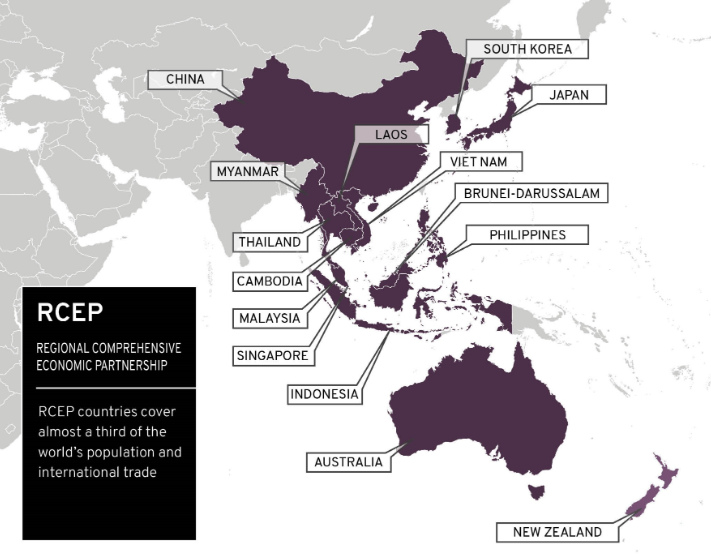
Impact of Trade Policies on Import/Export Businesses
Do you know how trade policies impact your import/export business? Here’s what you need to consider.
Tariff Implications:
- Increased Costs: High tariffs can significantly increase the cost of goods, affecting pricing and competitiveness. For instance, tariffs on automobile parts can add substantial costs.
- Price Adjustments: Businesses may need to adjust their pricing strategies to remain competitive while covering additional costs.
Regulatory Compliance:
- Documentation Requirements: Ensuring all documentation is accurate and complete is crucial. Missing documents can lead to delays and fines.
- Quality Standards: Compliance with Chinese quality standards is essential. Non-compliance can result in goods being rejected at customs.
Utilizing Trade Agreements to Benefit Your Export Business
Are you leveraging trade agreements to maximize your export benefits? Here’s how you can use these agreements to your advantage.
Reduced Tariffs:
- Lower Costs: Trade agreements often include reduced tariffs, making your products more price-competitive. For example, the RCEP agreement lowers tariffs on many products traded between member countries.
- Enhanced Market Access: Lower tariffs can open new markets within member countries, increasing your customer base.
Simplified Customs Procedures:
- Faster Clearance: Trade agreements often streamline customs procedures, reducing clearance times. This can be crucial for perishable goods like fresh produce.
- Less Bureaucracy: Agreements can reduce the amount of red tape, making it easier to navigate regulatory requirements.
Action Steps:
- Stay Informed: Keep up-to-date with current and upcoming trade agreements. Resources like the World Trade Organization (WTO) website provide valuable information.
- Consult Experts: Work with trade experts or consultants who understand the intricacies of these agreements and can help you navigate them effectively.
By understanding China’s trade policies, recognizing their impact on your business, and leveraging trade agreements, you can enhance your export strategy and gain a competitive edge in the Chinese market.
Special Focus: Qianhai and MCC Qianhai

Introduction to Qianhai
Have you heard about Qianhai and its significance in global trade? Qianhai has rapidly emerged as a major logistics and trade hub, transforming the way businesses operate in the Greater Bay Area.
Overview of Qianhai as a Major Logistics and Trade Hub
Qianhai’s Role in Logistics:
- Strategic Location: Located in Shenzhen, Qianhai serves as a gateway to both mainland China and international markets.
- Advanced Infrastructure: The area boasts state-of-the-art facilities, including Qianhaiwan Free Trade Port and extensive transportation networks.
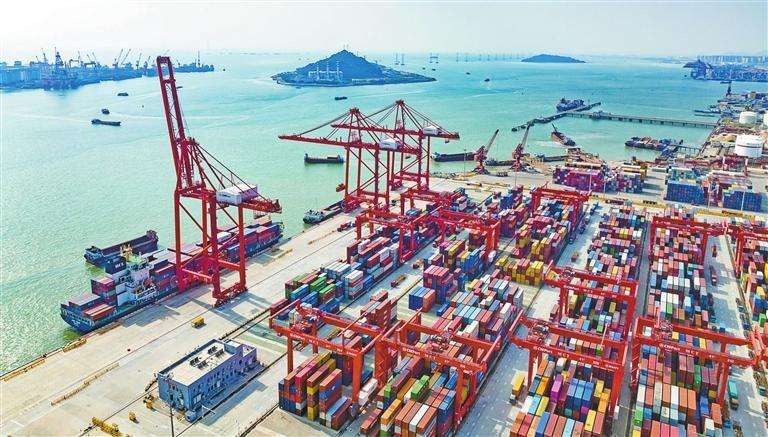
Impact on Trade:
- Increased Efficiency: With streamlined processes and modern infrastructure, Qianhai significantly reduces logistics costs and transit times.
- Global Connectivity: Qianhai’s port and logistics facilities connect to over 600 ports worldwide, facilitating seamless global trade.
Strategic Importance of Qianhai in the Greater Bay Area
Why is Qianhai crucial for businesses in the Greater Bay Area?
Economic Integration:
- Hub for Innovation: Qianhai is designed to integrate the economies of Hong Kong, Macau, and mainland China, promoting cross-border trade and innovation.
- Support for SMEs: The area offers numerous incentives and support for small and medium enterprises (SMEs), making it easier for them to expand their operations.
Policy Support:
- Preferential Policies: Businesses in Qianhai benefit from preferential policies, including tax incentives and simplified customs procedures.
- RCEP Benefits: As part of the Regional Comprehensive Economic Partnership (RCEP), Qianhai enjoys reduced tariffs and improved market access within the region.
 MCC Qianhai Platform
MCC Qianhai Platform
Are you familiar with the MCC Qianhai platform and its benefits for exporters?
Background and Purpose of the MCC Qianhai Platform
Foundation and Goals:
- Joint Venture: MCC Qianhai is a collaborative effort between FS International Limited and China Merchants Bonded Logistics to create a comprehensive logistics platform.
- Purpose: The platform aims to facilitate efficient consolidation and transshipment of goods, making it easier for businesses to export and import.
Key Benefits and Services Provided by MCC Qianhai
Core Services:
- Consolidation Services: Combining multiple small shipments into larger ones to reduce costs.
- Customs Clearance: Streamlined customs processes to ensure quick clearance and delivery.
Additional Benefits:
- Strategic Location: Proximity to major ports and transportation hubs enhances logistical efficiency.
- Advanced Technology: Utilization of modern tracking systems and automation to improve transparency and reduce errors.
Exporting via MCC Qianhai
How does MCC Qianhai simplify the export process?
Streamlined Processes:
- Simplified Documentation: MCC Qianhai assists with preparing and submitting all necessary export documentation.
- Efficient Customs Clearance: The platform’s close cooperation with customs authorities ensures faster clearance.
Case Studies and Success Stories:
- Example 1: A European electronics company reduced their shipping costs by 20% and improved delivery times by using MCC Qianhai’s consolidation services.
- Example 2: A North American food exporter saw a 30% increase in market reach due to MCC Qianhai’s efficient logistics and distribution network.
Advantages of Using MCC Qianhai
Why should you consider using MCC Qianhai for your logistics needs?
Geographical and Logistical Advantages
Strategic Benefits:
- Central Location: Situated in the heart of the Greater Bay Area, MCC Qianhai offers unparalleled access to major markets.
- Connectivity: Excellent connectivity to sea, air, and land transport networks ensures smooth and timely delivery.
Cost Savings and Efficiency Improvements
Economic Benefits:
- Reduced Shipping Costs: Consolidation services lower the cost per unit of shipping.
- Faster Turnaround: Efficient handling and customs processes reduce transit times, leading to quicker market entry.
Preferential Policies and Trade Facilitation
Policy Benefits:
- Tax Incentives: Businesses operating in Qianhai can benefit from various tax breaks and financial incentives.
- Trade Facilitation: Simplified customs procedures and favorable policies under RCEP enhance trade efficiency.
By leveraging the strategic location, advanced services, and policy benefits of MCC Qianhai, businesses can significantly improve their logistics efficiency and cost-effectiveness, making it an ideal choice for exporters looking to enter or expand in the Chinese market.
Common Challenges and Solutions
Challenges Faced During the Export Process
Have you encountered obstacles while trying to export to China? Many exporters face common challenges that can hinder their success.
Regulatory Compliance:
- Complex Regulations: Navigating China’s complex regulatory landscape can be daunting. Each product category has specific requirements, from safety standards to labeling.
- Frequent Changes: Chinese regulations are subject to frequent updates, making it difficult to stay compliant.
Logistics and Shipping:
- Customs Delays: Incorrect documentation or non-compliance can lead to significant customs delays.
- High Shipping Costs: International shipping costs can be prohibitive, especially for small and medium enterprises.
Market Entry and Competition:
- Market Saturation: Certain sectors in China are highly competitive, making it challenging for new entrants to gain a foothold.
- Cultural Differences: Understanding and adapting to cultural differences is essential for successful market entry.
Practical Solutions and Tips for Overcoming These Challenges
Wondering how to overcome these hurdles and streamline your export process to China? Here are some practical solutions.
Regulatory Compliance:
- Hire Experts: Engage with local consultants or legal experts who understand the Chinese regulatory environment. They can help navigate compliance requirements and keep you updated on regulatory changes.
- Continuous Monitoring: Use tools and services that provide real-time updates on regulatory changes. Subscribing to regulatory newsletters and participating in industry seminars can keep you informed.
Logistics and Shipping:
- Accurate Documentation: Ensure all export documents are complete and accurate. Use a checklist to verify documents such as the Bill of Lading, Commercial Invoice, and Certificate of Origin.
- Choose Reliable Partners: Work with experienced freight forwarders and customs brokers. Companies like DHL and FedEx offer reliable services and have extensive experience in handling exports to China.
- Leverage Consolidation Services: Utilize consolidation services, such as those provided by MCC Qianhai, to reduce shipping costs and improve efficiency.
Market Entry and Competition:
- Market Research: Conduct thorough market research to understand the competitive landscape. Use resources like Alibaba’s market insights and China’s National Bureau of Statistics.
- Local Partnerships: Form partnerships with local distributors and agents who understand the market dynamics and consumer preferences.
- Cultural Training: Invest in cultural training for your team to better understand and engage with Chinese customers. This can include language training and learning about business etiquette.
By addressing these common challenges with targeted solutions, you can streamline your export process and enhance your chances of success in the Chinese market.
Case Studies
Examples of Successful Exports to China
Are you looking for real-world examples of successful exports to China? Here are a few case studies that illustrate how businesses have navigated the complexities of the Chinese market and found success.
Case Study 1: European Electronics Manufacturer
- Company Profile: A leading European electronics manufacturer aimed to expand into the Chinese market.
- Strategy: The company partnered with MCC Qianhai for consolidation and logistics services. They also ensured compliance with the China Compulsory Certificate (CCC) requirements.
- Outcome: By leveraging MCC Qianhai’s strategic location and efficient customs clearance, the company reduced shipping costs by 20% and improved delivery times by 30%. This resulted in increased market penetration and sales growth.
Case Study 2: North American Food Exporter
- Company Profile: A North American company specializing in organic food products sought to enter China’s growing health food market.
- Strategy: The company conducted thorough market research to understand local consumer preferences and partnered with a local distributor for better market access. They also utilized MCC Qianhai’s consolidation services to streamline their shipments.
- Outcome: The company saw a 30% increase in market reach within the first year, attributing success to efficient logistics and a strong local partnership.
Lessons Learned from Real-World Scenarios
What can you learn from businesses that have successfully exported to China? Here are key takeaways from their experiences.
Lesson 1: Importance of Compliance
- Regulatory Adherence: Ensuring compliance with Chinese regulations, such as obtaining the necessary certifications, is crucial. Non-compliance can lead to delays and financial penalties.
- Proactive Monitoring: Stay updated with regulatory changes and adapt quickly. Utilizing tools and services that provide real-time updates can help maintain compliance.
Lesson 2: Effective Logistics Management
- Leverage Consolidation Services: Using services like MCC Qianhai’s consolidation can reduce costs and improve shipping efficiency. This is particularly beneficial for small and medium enterprises.
- Reliable Partners: Partnering with experienced freight forwarders and customs brokers ensures smooth customs clearance and reduces the risk of delays.
Lesson 3: Market Adaptation
- Local Market Research: Understanding local consumer preferences is key. Tailor your products and marketing strategies to meet the needs of the Chinese market.
- Cultural Sensitivity: Investing in cultural training for your team can improve business relationships and customer engagement.
By studying these case studies and lessons learned, you can better prepare your business for exporting to China, avoiding common pitfalls, and leveraging successful strategies to achieve your goals.
Wrapping Up: Key Takeaways and Next Steps
Recap of Key Points
Are you ready to export to China with confidence? Let’s recap the essential steps and strategies covered:
- Understanding Regulations: Comply with China’s stringent import regulations and obtain necessary certifications to avoid delays.
- Effective Documentation: Ensure all required documents, such as the Bill of Lading, Commercial Invoice, and Certificate of Origin, are accurate and complete.
- Choosing Shipping Methods: Select the right shipping method, whether air freight for speed or sea freight for cost savings, based on your product’s needs.
- Navigating Customs: Streamline customs clearance by working with experienced customs brokers and staying informed about regulatory changes.
- Utilizing MCC Qianhai: Leverage the strategic advantages and services of MCC Qianhai for efficient logistics, cost reduction, and market entry.
- Learning from Case Studies: Study real-world examples of successful exports to understand best practices and avoid common pitfalls.
Encouragement to Stay Updated with Regulations and Best Practices
Staying updated with the latest regulations and best practices is crucial for maintaining a competitive edge in the Chinese market. Regularly consult official sources like the General Administration of Customs of China (GACC) and industry publications. Engage with local experts and participate in trade seminars to keep abreast of changes and opportunities.
By continuously educating yourself and adapting your strategies, you can ensure long-term success in your exporting endeavors to China.
Appendix
Glossary of Key Terms
Are you familiar with the essential terms used in exporting to China? Understanding these key terms can simplify the process and ensure smooth operations.
- Bill of Lading: A crucial document issued by a carrier to acknowledge receipt of cargo for shipment. It serves as a shipment receipt and a title of goods.
- Commercial Invoice: An invoice that provides detailed information about the goods being shipped and the transaction between the buyer and seller. It is essential for customs clearance.
- Certificate of Origin: A document certifying the country in which the goods were manufactured. This certificate is often required for tariff reductions under free trade agreements.
- China Compulsory Certificate (CCC): A mandatory safety mark for many products imported into China, ensuring they meet Chinese safety and quality standards.
- Customs Broker: A licensed individual or firm that prepares and submits documentation for clearing goods through customs. They help ensure compliance with all regulations.
- Freight Forwarder: A company that arranges the shipping and storage of goods on behalf of shippers. They handle logistics, documentation, and international shipping.
List of Useful Resources and Contacts for Exporting to China
Looking for reliable resources to help you navigate the export process to China? Here are some essential contacts and tools:
- General Administration of Customs of China (GACC): The official authority for customs regulations in China. GACC Website
- China’s National Bureau of Statistics: Source for statistical data on China’s economy and demographics. NBS China
- MCC Qianhai: Offers consolidation and logistics services to streamline shipping to China. MCC Qianhai Services
- China-Britain Business Council (CBBC): Provides support and services for UK companies doing business with China. CBBC Website
- American Chamber of Commerce in China (AmCham China): Offers resources and networking opportunities for American businesses in China. AmCham China Website
- EU SME Centre: Supports European small and medium enterprises in China with practical advice and business tools. EU SME Centre Website
- Export.gov: Offers comprehensive guides and resources for exporting to various countries, including China. Export.gov China Guide
- Trade Map: Provides international trade statistics and market analysis tools for businesses. Trade Map Website
- China Council for the Promotion of International Trade (CCPIT): Facilitates trade and investment between China and other countries. CCPIT Website
- Hong Kong Trade Development Council (HKTDC): Offers insights and services to help businesses enter the Chinese market through Hong Kong. HKTDC Website
By utilizing these resources and understanding the key terms, you can enhance your export strategy and ensure a successful entry into the Chinese market.


 Bill of Lading: Acts as a receipt for cargo and a contract between the shipper and carrier.
Bill of Lading: Acts as a receipt for cargo and a contract between the shipper and carrier. Experience Matters: Select a
Experience Matters: Select a 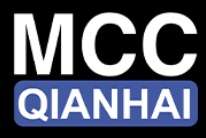 MCC Qianhai Platform
MCC Qianhai Platform